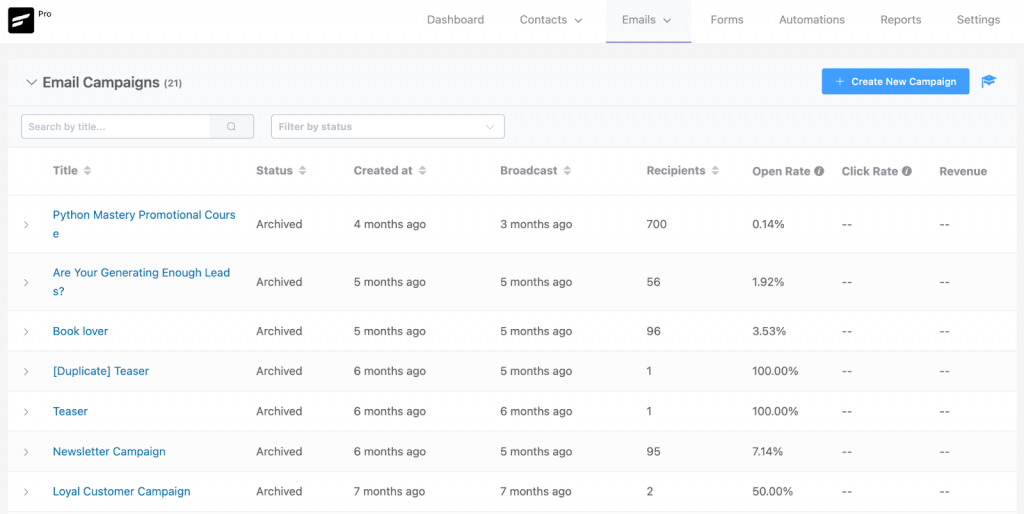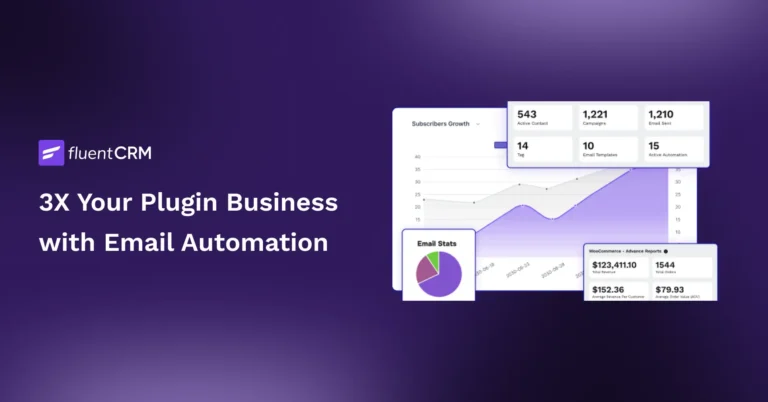
All About Email Sender Reputation: Definition, Impact, How to Check and More
Let’s get straight to the fact: as human beings, we all carry biases, and how we treat someone often depends on the reputation they uphold! It may sound harsh, but it’s the reality, isn’t it?
In fact, it’s more accurate to say that reputation operates as a compass in any form of communication. And when it comes to email marketing, the email sender’s reputation is no different.
The fate of your email marketing campaign significantly relies on your sender reputation, determining whether it’s going to be a smooth ride or a challenging one! Are you eager to learn more about email sender reputation and discover how to enhance it?
Well, you’re in the right spot. Let’s explore what email sender reputation is, why it serves as your guiding star in email communication, and, most importantly, how to ensure a better one!
What is email sender reputation?
Email sender reputation is like a trust score for email senders. To be more precise, email sender reputation is a measure of how reliable and trustworthy an email sender is, based on their past behavior. Sounds confusing?
Well, let’s take a quick look at how email works!
Every email we send must go through a series of well-defined steps. The moment you hit the “send,” button, your email goes through a process known as Simple Mail Transfer Protocol (SMTP).
Initially, your email client communicates with an SMTP server, providing details such as the recipient’s email address, email content, and attachments. The SMTP server then engages with the recipient’s email server, evaluating your past email patterns and deciding whether your email deserves to be delivered to the recipient’s inbox.
If the recipient’s server detects any issues with your email or marks your previous activities as suspicious, it might reject the email or classify it as spam. And this is where the importance of the email sender reputation comes into play!
In short, we can say, that email sender reputation is a measure of the trustworthiness and reliability of a particular email sender. Email service providers (ESPs) and internet service providers (ISPs) use it to evaluate the legitimacy of an email sender and determine whether their emails should be delivered to recipients’ inboxes or marked as spam.
Why maintaining a good sending reputation is important for better email deliverability?
Let’s say you want to get a cell phone within a certain budget, and you have two options: an iPhone 15 or a brand-new phone from an unknown company. Which one would you choose?
Our guess, 9 out of 10 times, you’d choose the iPhone 15. Why? Because the manufacturer of the iPhone 15 has a good reputation, and you trust them.
Similarly, when it comes to email deliverability, a good sender reputation is immensely crucial. If you can maintain a positive sender reputation, it will result in high deliverability rates. Your email will reach the intended recipients without being filtered into spam folders.
On the other hand, a poor sender reputation will decrease the probability of your email being delivered. Your email might end up in the spam folder and in the worst-case scenario, ISPs can even put you on the blacklist!
Here are some direct impacts of having a good sender reputation on email deliverability –
- Better inbox placement: First thing first! To seal the expected deal through your email campaign, your email must first reach the recipient’s inbox, right? And your positive sender reputation ensures just that! It will decrease the likelihood of emails landing in the spam folders.
- Improved engagement: Improved inbox placement guarantees better engagement! Once you’ve successfully satisfied your recipients’ servers and navigated through spam filters to land in your clients’ inboxes, the likelihood of your email being opened and clicked significantly increases.
- Staying off the blacklists: Email blacklist is a nightmare for every email marketer and a good email reputation will help you stay away from these unwelcome dreams and sleep well! On the other hand, if your reputation gets hampered by any means, there will be a good possibility that ISPs and various spam filters may include you in blacklists.
- Cost efficiency: Email marketing can be costly, especially when sending emails in bulk, and your email service providers charge you based on the number of emails sent. In this scenario, every email counts, and you can’t afford any of your emails to end up in spam folders. A positive reputation addresses these concerns, reducing the likelihood of emails being marked as spam and ensuring that your resources are used efficiently.
- Better branding: A positive sender reputation reflects positively on your brand’s credibility. Consistently delivering valuable and relevant content helps build trust with your audience, reinforcing your brand’s reputation in your recipient’s eyes.
6 key factors that directly impact email sender reputation
Email sender reputation depends on various factors such as spam rate, bounce rate, engagement rate, etc., and each of these factors is interconnected. It’s more like a chain of dominos; when one of these dominos falls, the whole chain falls at stake!

Conversely, when you successfully maintain a positive vibe for each of these key factors, your sender reputation will remain intact and increase over time.
Here are the key factors that directly impact sender reputation:
Bounce rate
Bounce rate is like having letters returned because the address is wrong or the mailbox is full. In emails, it happens when the recipient’s address is no longer valid or there’s a temporary issue. However, a high bounce rate can harm your email sender reputation. It would send a signal to email providers saying that your contact list may need to be updated or that you need to manage your email list effectively. This can lead to a decrease in your sender reputation.
Sender history
Email sender history is essentially your email track record. It includes how often you send emails, how recipients engage with them, and any past issues. A positive sender history, with a record of sending relevant content and maintaining good engagement, boosts your reputation. However, past issues, such as sending too many emails or having a high spam complaint rate, can negatively impact it
Unsubscribe rate
‘I don’t want these emails anymore!’
Yes, it might sound harsh, but this is what an email unsubscribe is. It occurs when someone opts out from your email list and decides they don’t want emails from you anymore.
Although email unsubscribes are unavoidable and providing an unsubscribe option with your email is essential to stay compliant with the CAN-SPAM Act, too many unsubscribes can send a bad signal to email providers. It might signal to providers that you may not be adhering to best practices, your email content might not be up to the mark, or recipients might not be getting the expected content!
And in the long run, this could affect your email sender reputation.
Engagement rate
Engagement rate is the metric that indicates how rich and engaging your email content is, and how much recipients love your emails. It considers other metrics like open rate, click rate, and click-through rate. Your email sender reputation greatly depends on these metrics. A high engagement rate is a positive sign to email providers, indicating that your content is valued. Conversely, low engagement may lead to a decrease in reputation.
Spam complaints
Spam complaints happen when people mark your emails as unwanted, and it may be the most unwanted fate your email could face during your email campaign. And you know what? Email service providers take this metric very seriously.
Too many spam complaints can seriously harm your reputation. It’s a red flag that your emails might not be welcome, potentially causing a significant drop in your email sender reputation.
Spam traps
Spam traps act as the watchmen of our mailboxes, helping us keep our inboxes free from unwanted messages. Whenever they detect an email as fishy or inappropriate, they directly route these emails to the spam folders.
Hitting spam traps can severely damage your reputation and have a long-term impact. It signals that you might not be using proper practices, prompting email providers to take action
How to check your email sender reputation ?
You can’t improve until you know where you are at this moment, right? That’s why checking your email sender reputation is crucial, and there are various ways to do it. Here are the two most straightforward methods of checking your email sender reputation –
Leverage online reputation checker tools
Thanks to dedicated online tools, checking your email sender reputation has become hassle-free. These tools offer an easy way to assess your sender reputation.
However, it’s important to note that each tool employs a different methodology and algorithm to determine your score. That’s why to get a comprehensive view, consider running multiple checks and comparing the results.
Here are some online checkers to assist you –
- SenderScore.org: Provides an overview of how trustworthy an email sender’s IP address is
- MailTester: Examines your content, mail server, and sender IP address, offering a detailed report on configurations
- BarracudaCentral: Checks both IP and domain reputations in real-time, classifying them as ‘good’ or ‘bad.’
- Talos Intelligence: Offers reputation scores for various internet identities, including IP addresses, URLs, domains, and email/web content
- Google Postmaster Tools: A tool to understand how Google will treat your sending domain when your email reaches its virtual door
- TrustedSource.org: Provides reputation scores for internet identities such as IP addresses, URLs, domains, and email/web content
- Send Forensics: Focuses on deliverability, analyzing content, link quality, authentication protocols, sending domain, and IP
- MxToolbox: Informs you about who is sending email claiming to be from your domain, the reputation of senders’ IPs, and the sender’s location
Track email reports manually
If you want to address your email issues manually and tackle the core of the problem yourself, there’s an option for that too! Robust and comprehensive email automation tools like FluentCRM are always available to make your job easier. Tools like FluentCRM provide detailed statistics of your email campaign, allowing you to check, compare, detect, and conquer your email-sending issues like a boss.

To do so, take a close look at the statistics, especially the open and bounce rates, of any campaign. Compare them with your successful campaigns and determine where you currently stand. If your open and click rates are relatively low, and recipients mark more emails as spam or unsubscribe frequently, it might cause problems for your sender reputation score. So, identify the issues ASAP and act accordingly.
9 best practices to ensure a strong email sender reputation
“A bad email reputation is like a hangover: hard to get rid of and it makes everything else hurt.”
Christ Marriott
Everyone knows how a bad email reputation can harm all your upcoming email campaigns, and that’s the last thing you would want to encounter! But how can you avoid these harsh outcomes?
Sorry, there are no shortcuts. Building a good email reputation requires a dedicated process, and ignoring any of the components of this process can lead you to this unwanted fate! So, what should you do to maintain a good email sender reputation?
Well, the word “process” might seem intimidating at first, but it’s easier than you think! Just follow these best practices to ensure a robust email sender reputation –
Say no to purchased email lists
While purchasing an email list may seem like an easy option initially, in the long run, it has some serious consequences. It’s more like a shortcut that leads to more problems than solutions!
Purchased lists often contain outdated or incorrect information, resulting in numerous bounced emails and potential harm to your email sender reputation. Additionally, people on those lists didn’t ask for your emails, which can lead to more spam complaints. That’s why it’s always better to focus on growing your list the right way. It not only keeps your audience more interested but also helps you in upholding a good sender reputation.
Employ double opt-in
Prioritize sending emails only to those who have explicitly opted in. Implement a double opt-in process to ensure that all your subscribers are genuinely interested in your emails. The opt-in email marketing approach not only guarantees a better open rate and increased engagement but also minimizes the risk of being flagged by spam filters.
Authenticate your emails
Email authentication is like signing your emails digitally, proving they’re genuinely from you. Use DKIM and SPF to add this digital signature, showing your emails are authentic. This helps protect your sender reputation by preventing others from misusing your domain.
Quick tip: Remember to check and update your SPF and DKIM records from time to time for proper authentication.
Maintain consistency
When sending emails, remember two key points:
- Don’t irregularly appear in your recipient’s inbox like a stranger
- Avoid overloading inboxes with unnecessary emails
So, what’s the solution?
It’s simple—follow email frequency best practices and stick to them. Establish and maintain a consistent sending schedule. Remember, changes in frequency or volume may trigger spam filters, impacting your sender reputation.
Here are some email frequency best practices that you can follow!
Segment your contacts
Segmentation is like a magic trick for maintaining a good sender reputation. Instead of sending the same message to everyone, categorize your subscribers based on different factors and send emails only to those who are truly interested.
By tailoring content for specific groups, you boost engagement rates and develop a positive sender reputation among both subscribers and email service providers.
Create compelling content
A captivating subject line might attract your recipient to click, but the quality of your content is the key to keeping them engaged, convincing them to take action, and ultimately earning the trust to become a welcomed guest in their inbox. When they trust you and consistently open your emails, your sender reputation improves.
Therefore, concentrate on crafting emails that attract, hook, engage, and persuade readers to take action.
Bonus: Tips for effective email copywriting
Don’t use spam trigger words
Avoid spam-trigger words in your emails to prevent them from being marked as spam by both users and email service providers. Even a simple word like ‘free’ can jeopardize your entire campaign by triggering the spam filters. Therefore, be mindful of your language to ensure your emails are delivered successfully.
Some examples of common spam trigger words include:
- Free
- Guarantee
- Urgent
- Click Here
- Cash
Remember, using these words doesn’t automatically classify your email as spam, but their careful use can help improve deliverability.
Clear unsubscribe process
‘Whoever wants to go, let them go’ – it’s as simple as that!
Keep in mind that if you don’t provide your subscribers with an easy way to exit, uninterested subscribers will still leave, and on their way out, they might mark you as spam! Isn’t that the last thing you want?
So, don’t forget to include a visible and user-friendly unsubscribe link in every email. Remember, making it easy for users to opt-out reduces the likelihood of spam complaints.
Regularly update and clean your email list
Keeping your email list fresh and accurate is a fundamental aspect of maintaining a strong sender reputation. Over time, email addresses can become invalid or disengaged, leading to higher bounce rates and potential spam complaints.
Regularly updating your list involves removing obsolete or incorrect email addresses and ensuring that your subscribers’ information is current. And there are various email list cleaning services to help you in this regard.
Keep in mind a clean email list not only improves deliverability but also enhances engagement metrics. It ensures that your emails reach a genuinely interested audience, fostering a healthier and more responsive email marketing ecosystem. Not sure how to approach email list cleaning? Try an email list cleaning service!
Take control of your email sender reputation!
Reputation can’t be bought; it must be earned. And it comes after following proper practices, embracing true virtues, and dedicating yourself to the process. Email sender reputation is no different!
To establish and uphold a good sender reputation, you’ll need to go the extra mile, play by the rules, and embrace best practices. In the beginning, it might seem demanding, but the results you’ll get in return will be worth all the hard work. So, it’s high time to analyze and enhance yours immediately, and we hope this blog will help you in this regard.
Thank you for reading this far. All the best, and have a good day!
Nader Chowdhury
Hi! My name is Nader Ahmed Chowdhury, and I enjoy writing about WordPress and email marketing. Starting with sharing random musings on social media 10-12 years ago, I’m now a digital marketing strategist for FluentCRM and WPManageNinja. And what do I do when I’m not blogging? Well, you may still find me writing something pointless on social media!






Leave a Reply